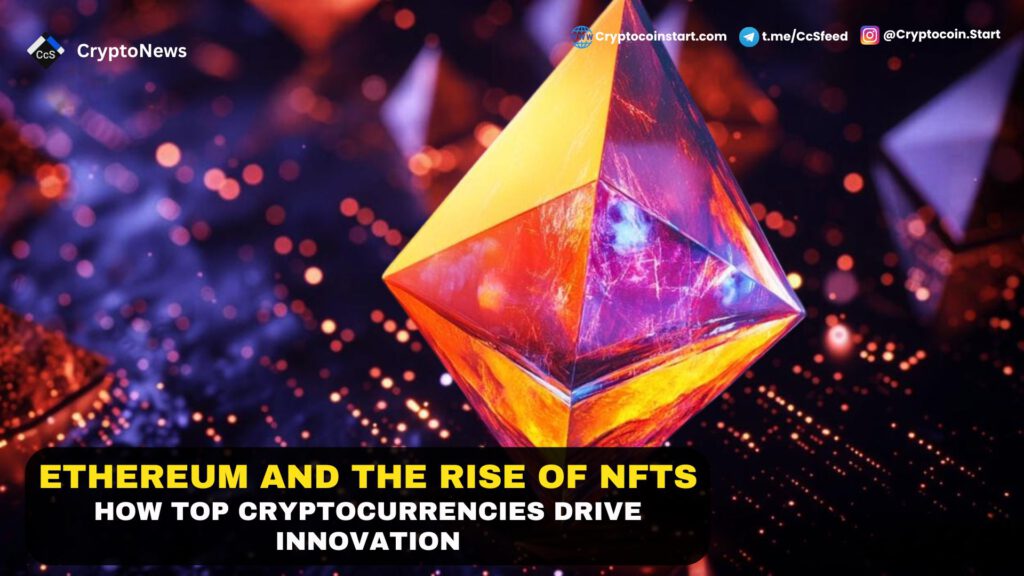
Ethereum (ETH): The Revolutionary Pioneer of NFT Ecosystems
Ethereum (ETH) is widely recognized as the backbone of the NFT industry. Its robust infrastructure and pioneering smart contract technology enable anyone to mint and trade NFTs with ease. As the first blockchain to support NFTs, Ethereum provides developers and artists with unmatched reliability and trust.
Key features of Ethereum in the NFT space include:
- Smart Contracts: Automate transactions and enforce agreements without intermediaries.
- Widespread Adoption: A large community of developers and users fosters innovation and collaboration.
- Interoperability: Seamless integration with various applications and marketplaces.
Solana (SOL): The Superior Choice for Speed and Cost-Effectiveness
While Ethereum has set the standard, Solana (SOL) has emerged as a formidable competitor, particularly in the NFT sector. As high transaction fees on Ethereum deter creators, Solana offers a solution with its superior transaction throughput and low costs. It can handle thousands of transactions per second, making it an attractive option for next-generation NFT marketplaces seeking to scale efficiently.
Advantages of using Solana for NFTs include:
- Low Transaction Fees: Cost-effective minting and trading of NFTs.
- High Speed: Rapid transaction processing enhances user experience.
- Flexible Ecosystem: Supports a wide range of applications beyond NFTs, such as DeFi and gaming.
Binance Coin (BNB): The Elite Enabler for Multi-Utility NFT Platforms
Binance Smart Chain, coupled with Binance Coin (BNB), provides unparalleled utility for NFT development and trade. With low transaction costs and efficient integration with numerous applications, BNB is an ideal choice for dynamic NFT markets. Developers can leverage BNB to create unique and profitable NFT applications across gaming, art, and collectibles.
Key benefits of Binance Coin in the NFT ecosystem include:
- Cost Efficiency: Minimizes fees associated with NFT transactions.
- Strong Community Support: Backed by one of the largest cryptocurrency exchanges, fostering growth and innovation.
- Diverse Applications: Suitable for various NFT types, from digital art to virtual real estate.
XRP (XRP): The Remarkable Bridge for Global NFT Payments
Ripple (XRP) offers a unique perspective on NFTs by focusing on cross-border transactions. Its innovative payment facilitation technology can transform the buying and selling of NFTs on a global scale. Although XRP is not as dominant in the NFT creation space as Ethereum or Solana, its ability to enable seamless international transfers positions it as an exciting player in the digital asset landscape.
Advantages of XRP for NFT payments include:
- Fast Transactions: Quick processing times enhance the buying experience.
- Low Fees: Cost-effective international transfers support NFT commerce.
- Global Reach: Facilitates transactions in multiple currencies, broadening the market for NFTs.
Tether (USDT): The Stable Powerhouse of NFT Transactions
Interestingly, Tether (USDT) plays a crucial role in the NFT market by stabilizing prices for these digital assets. Its value stability helps consumers and creators avoid the volatility often associated with cryptocurrencies. As a result, USDT is essential for traders looking to engage with NFTs without the risk of significant losses.
Benefits of using Tether in the NFT ecosystem include:
- Price Stability: Provides a reliable medium for transactions, reducing risk.
- Wide Acceptance: Commonly used across various NFT platforms and marketplaces.
- Liquidity: Facilitates quick entry and exit from NFT investments.
Conclusion: The Future of NFTs and Cryptocurrencies
The intersection of cryptocurrencies and NFTs is reshaping the landscape of digital finance and asset ownership. With Ethereum leading the charge and competitors like Solana, Binance Coin, XRP, and Tether offering unique strengths, the future of NFTs looks promising.
As these cryptocurrencies continue to evolve, they will play pivotal roles in defining the next phase of digital asset innovation. Whether you are a developer, creator, or investor, understanding the dynamics of these platforms can provide valuable insights into the burgeoning world of NFTs.
Key Takeaways
- Ethereum remains the foundational blockchain for NFTs, using smart contracts for seamless transactions.
- Solana offers speed and low fees, making it a preferred choice for NFT creators.
- Binance Coin enhances NFT platform utility with low transaction costs and strong community support.
- XRP enables efficient global payments for NFTs, facilitating cross-border transactions.
- Tether stabilizes NFT prices, allowing for safer trading environments.

